Foreword
Page last updated: September 2016
This revision of the Guidelines for preparing a submission to the Pharmaceutical Benefits Advisory Committee is the first full revision of the guidelines since 2006, and has involved substantial changes in many areas of the document. These changes have built on experience gained since 2006. This version 5.0 is shorter, while also addressing emerging new technical issues. The revision process was driven by an external consultancy incorporating Australian and international experts reporting to a Guidelines Revision Steering Committee. It has benefited from extensive discussions among members of the Pharmaceutical Benefits Advisory Committee and its subcommittees, as well as a wide range of contributors from industry, government, academia and the community.
This revision acknowledges the increasing international trend towards reliance on information about the costs and effectiveness of medicines by large third-party payers, including governments managing medicine subsidy programs. It reflects changes in the medicine development process internationally. Awareness of these trends has influenced the development of this revision.
These guidelines are carefully structured. They cover a wide range of requests for information. Not all requests will be relevant to all submissions. However, by responding to the requests where appropriate, the key matters for the specific circumstances of each submission will be presented transparently so that they can be understood clearly.
These guidelines reflect best practice as far as possible. The requests for information are designed to promote comparability across submissions and to improve confidence in decision making where possible. However, while they represent the currently preferred approach, reflecting the experience of nearly 2000 decisions, they are not prescriptive and there is flexibility in their interpretation. Given that it is rare for there to be an ideal evidence base for a submission, the guidelines take a pragmatic approach to preparing submissions. This means that PBAC decision making requires judgment, and preparing submissions cannot be likened to simply following a formula to guarantee success.
The guidelines changes are intended to help clarify the information that will best support PBAC decision making, taking into account developments in health technology assessment and PBAC experience of submissions. There is no substantive change in the key factors influencing decision making by the PBAC.
These guidelines will remain subject to regular review. They explicitly provide for the introduction of new methods. As these new methods become established and accepted, they will influence future updates.
I commend this revision to you. It distils the influence of many methodological disciplines, many contributions in a wide consultation process and, perhaps most importantly, many difficult decisions relating to many important submissions.
Andrew Wilson
Chair
Pharmaceutical Benefits Advisory Committee


